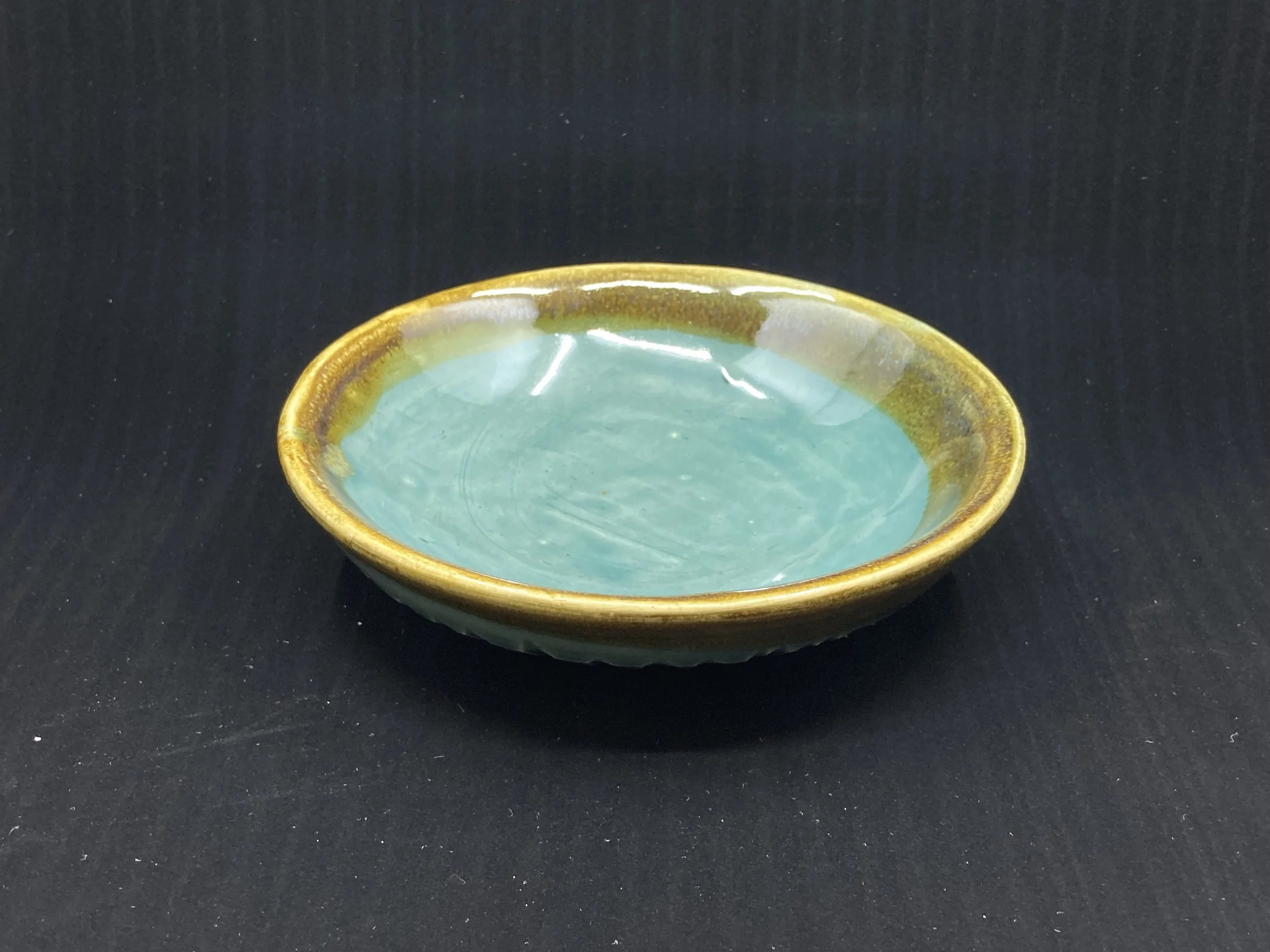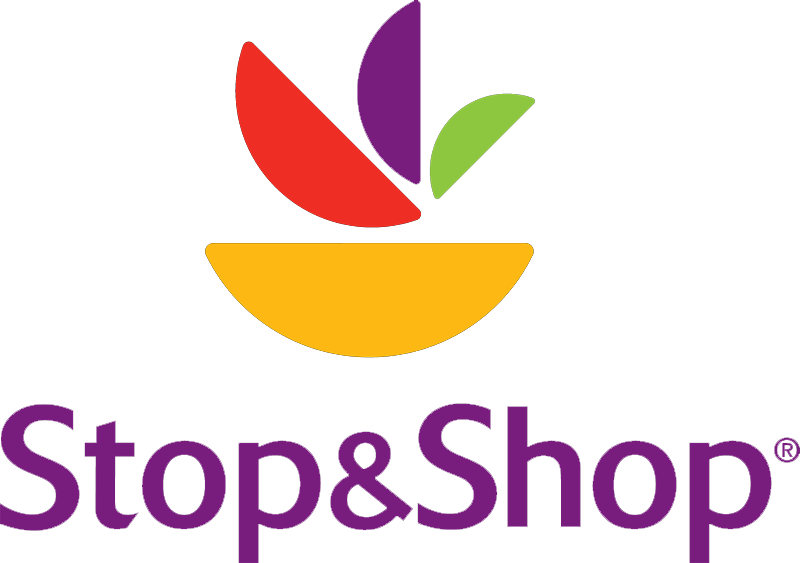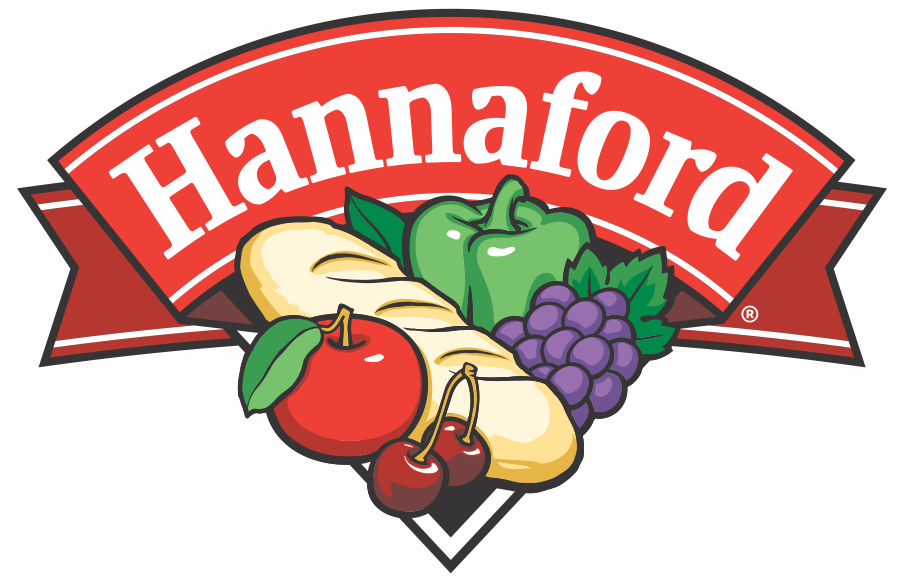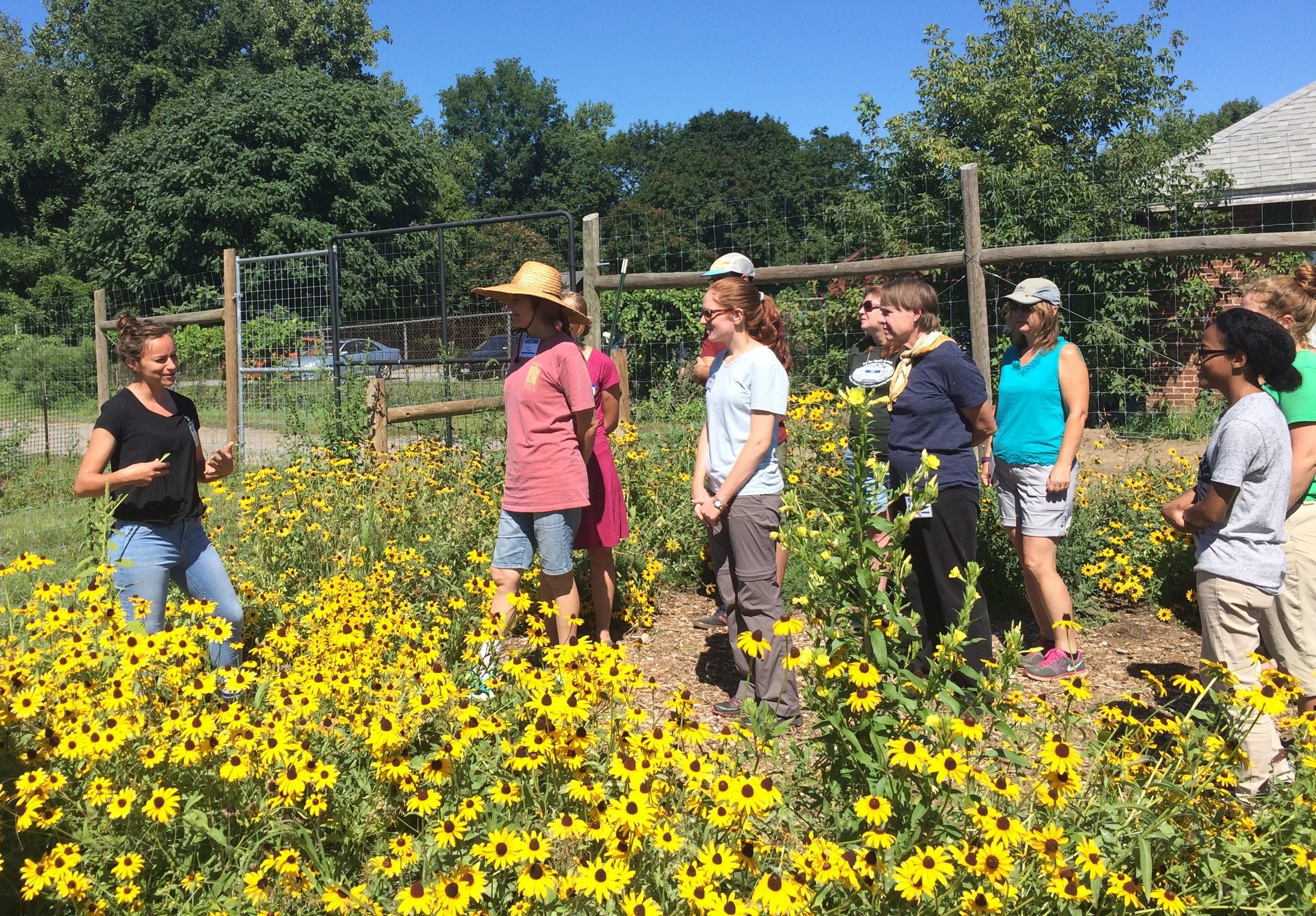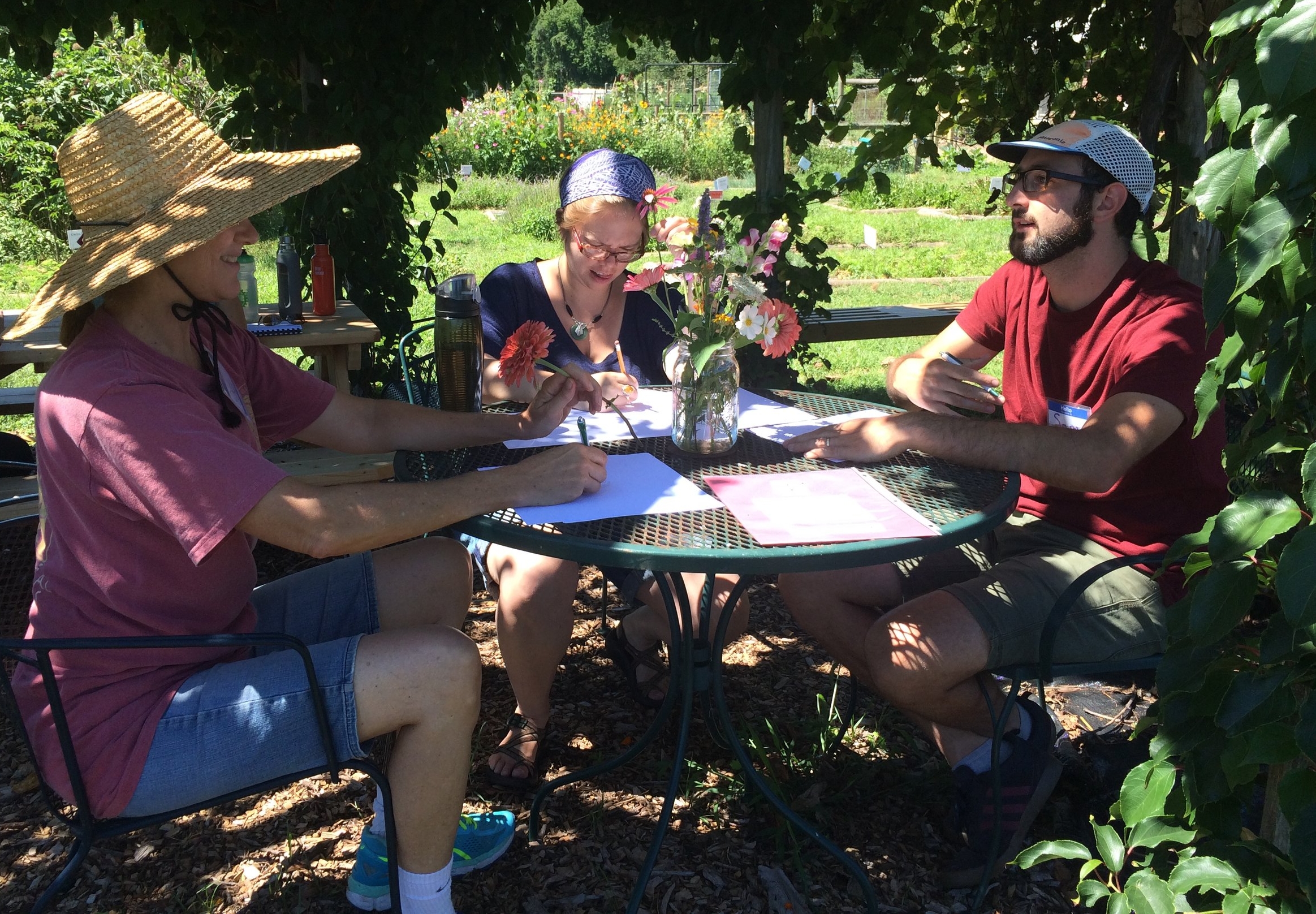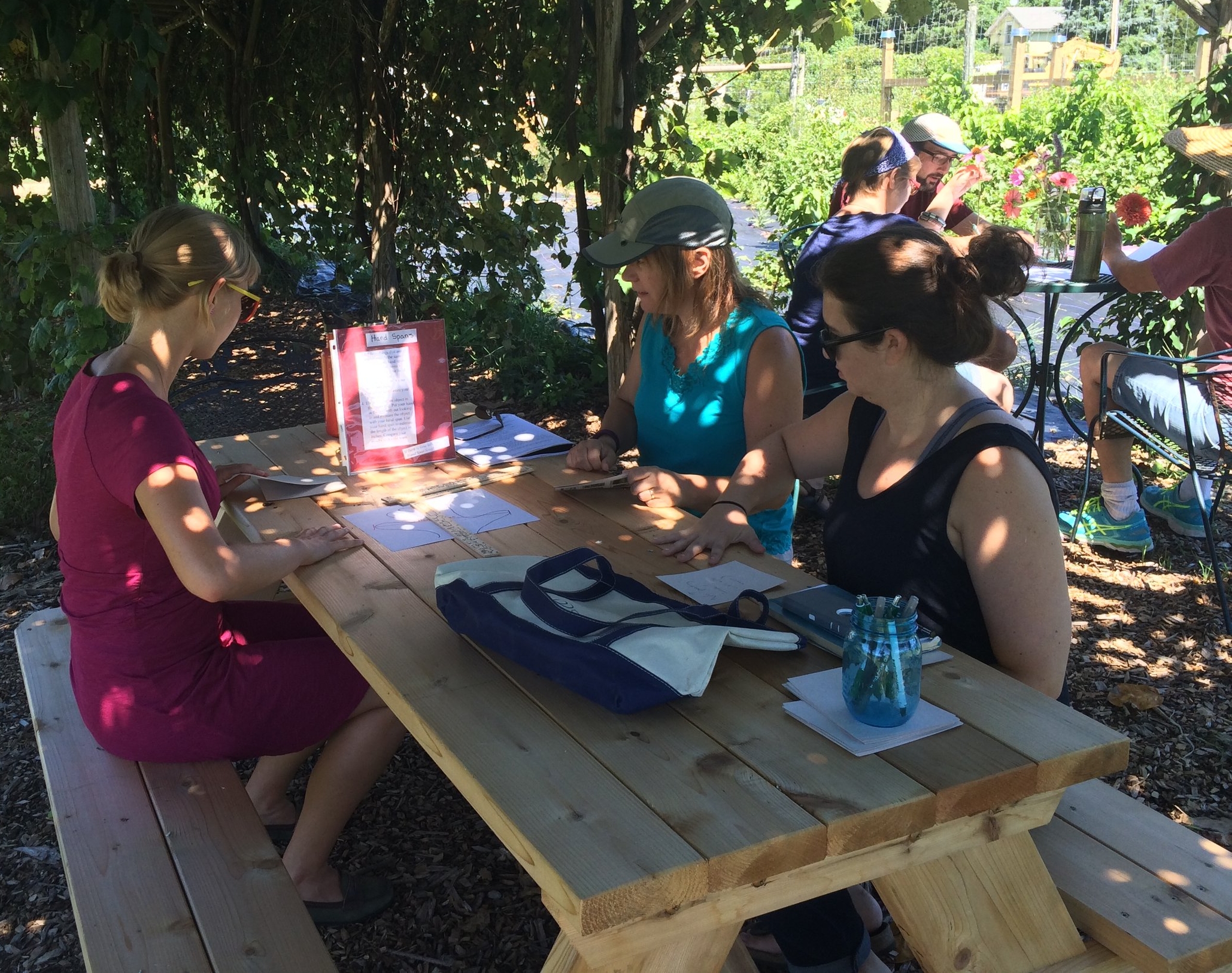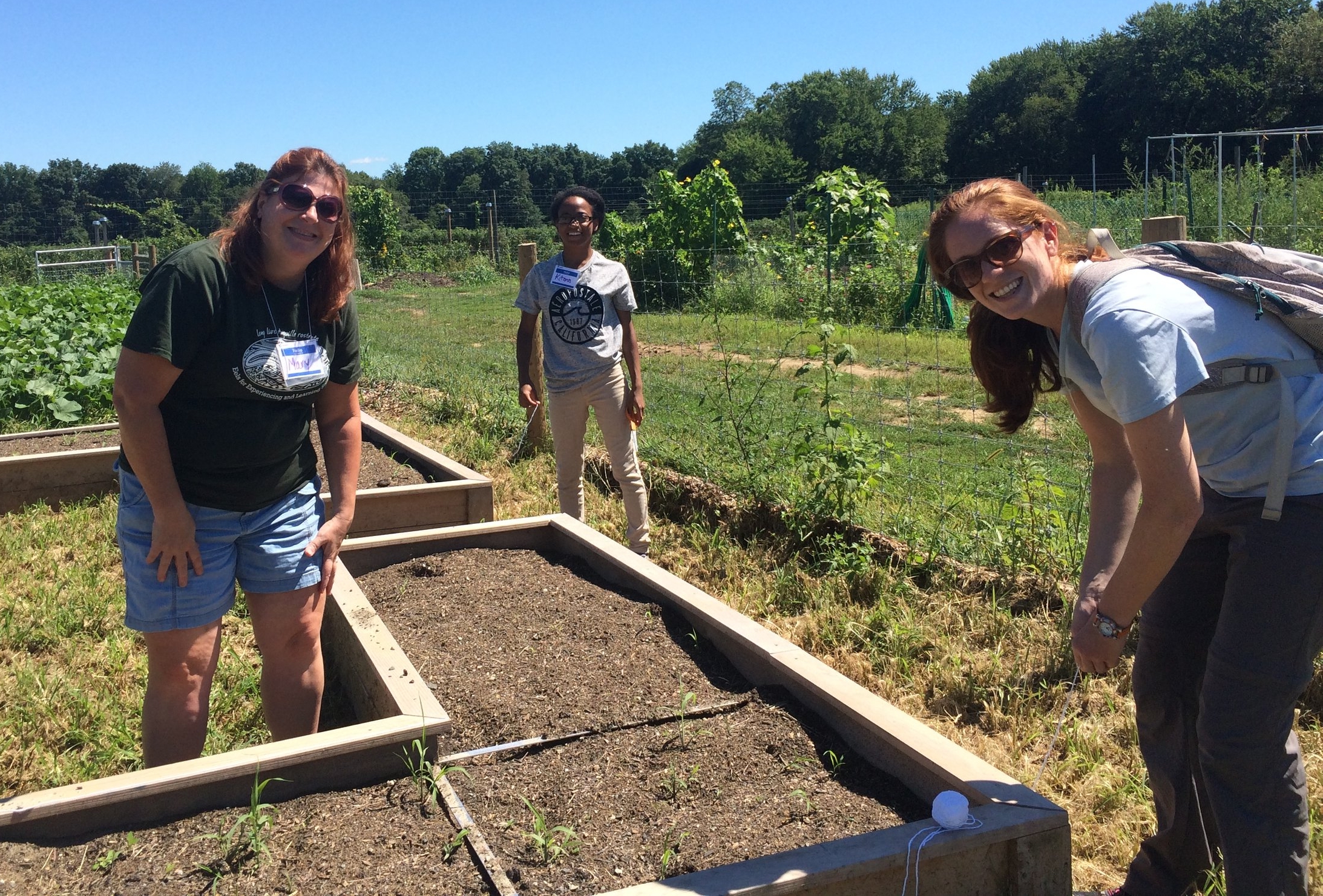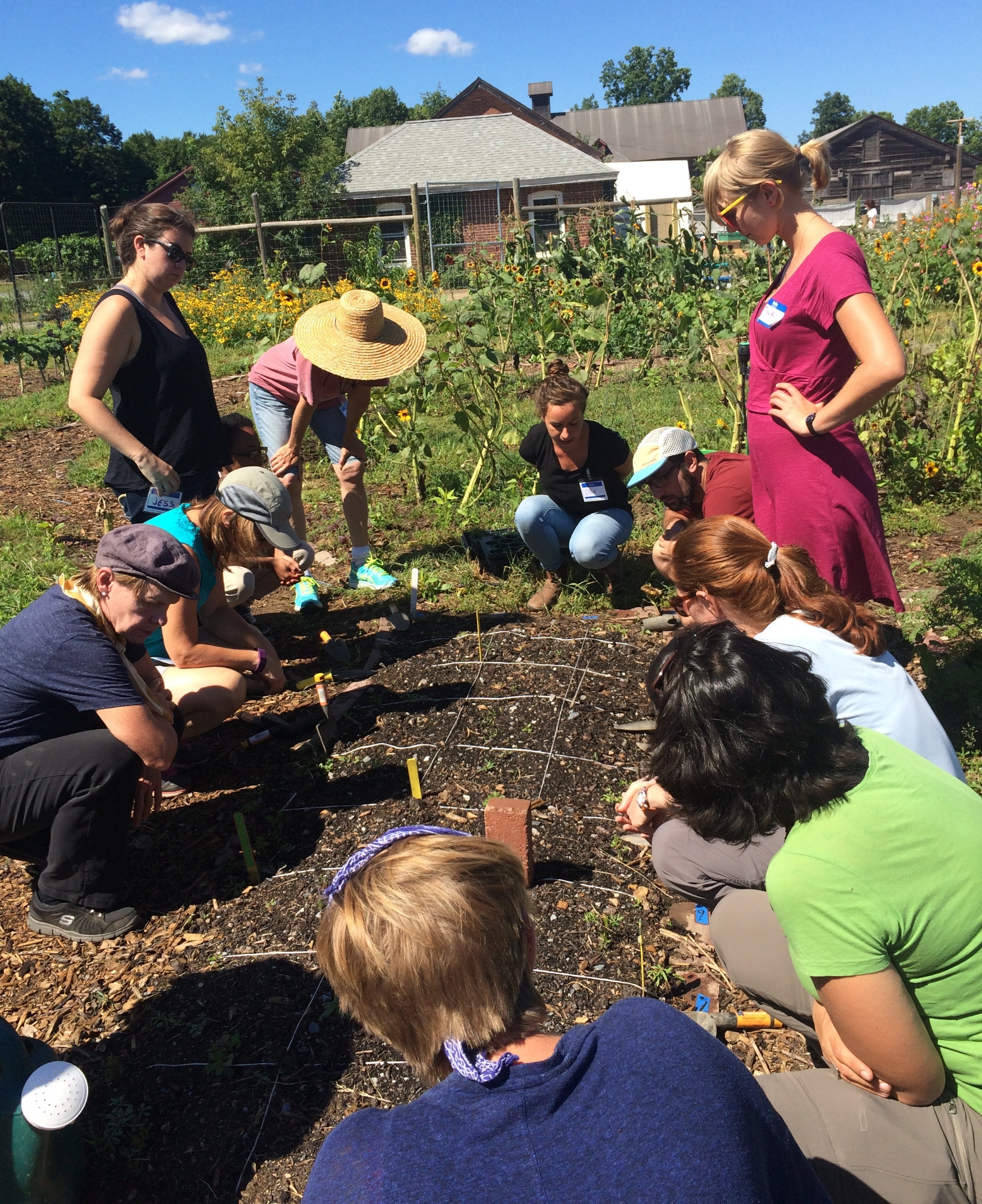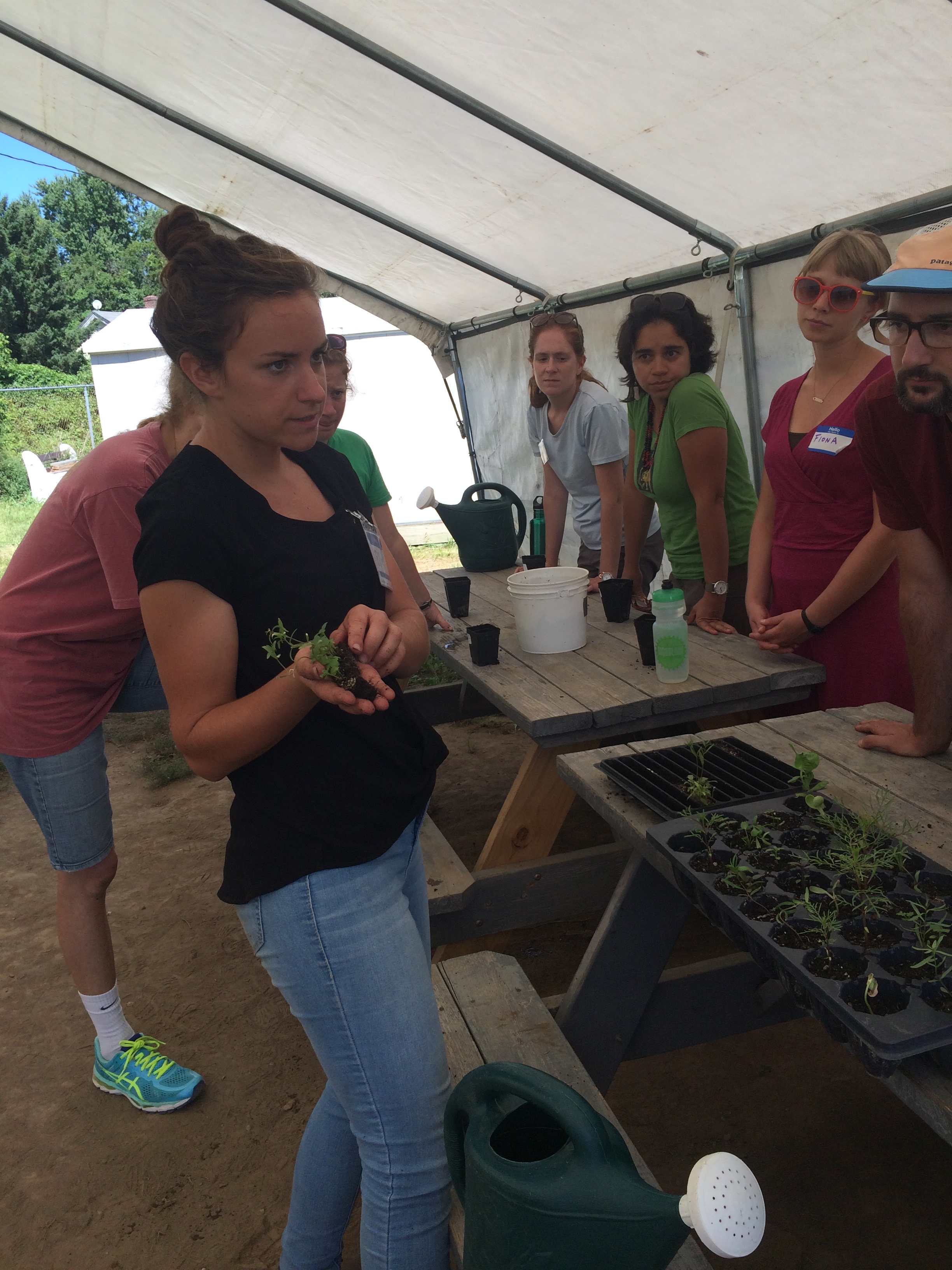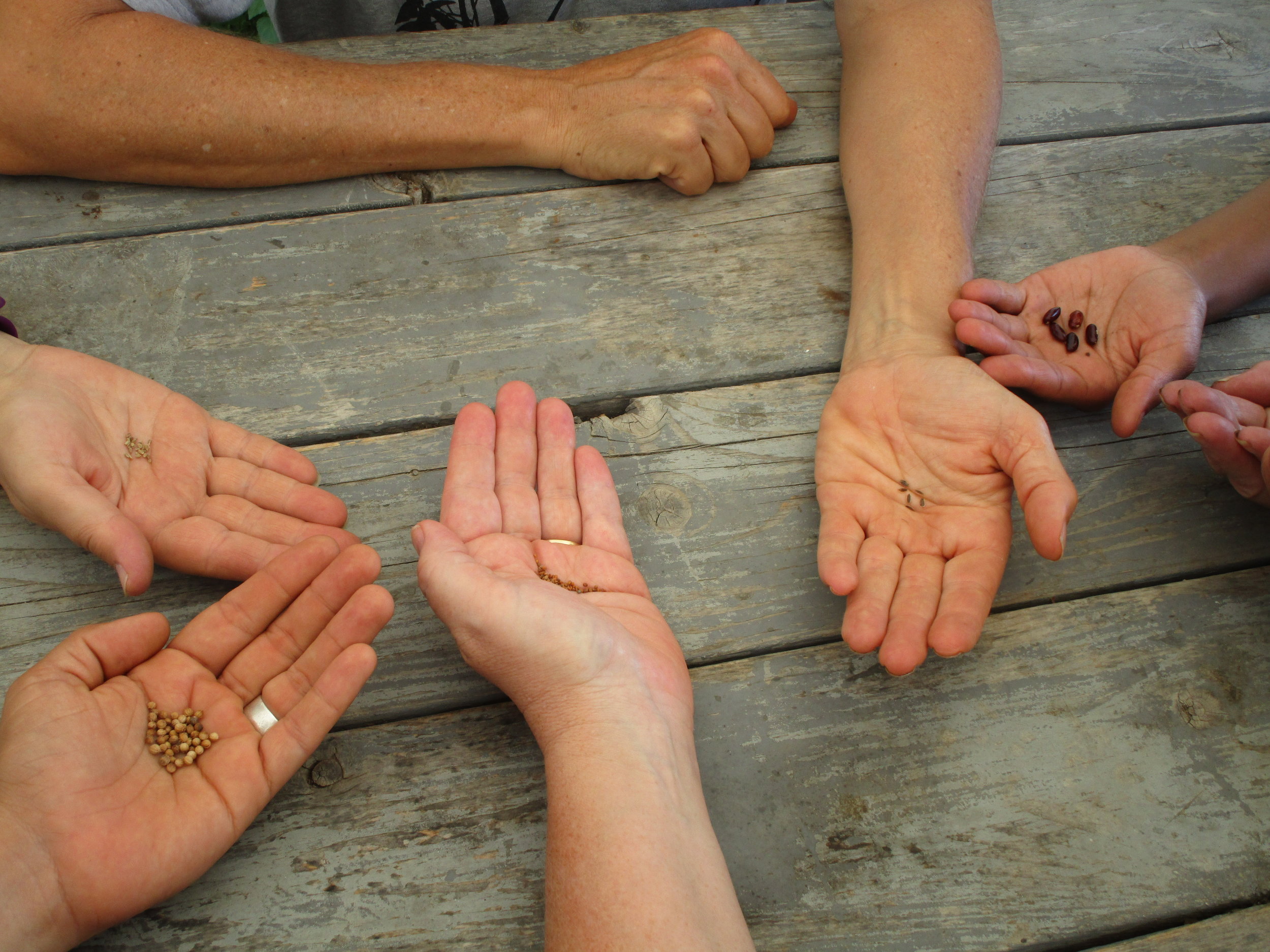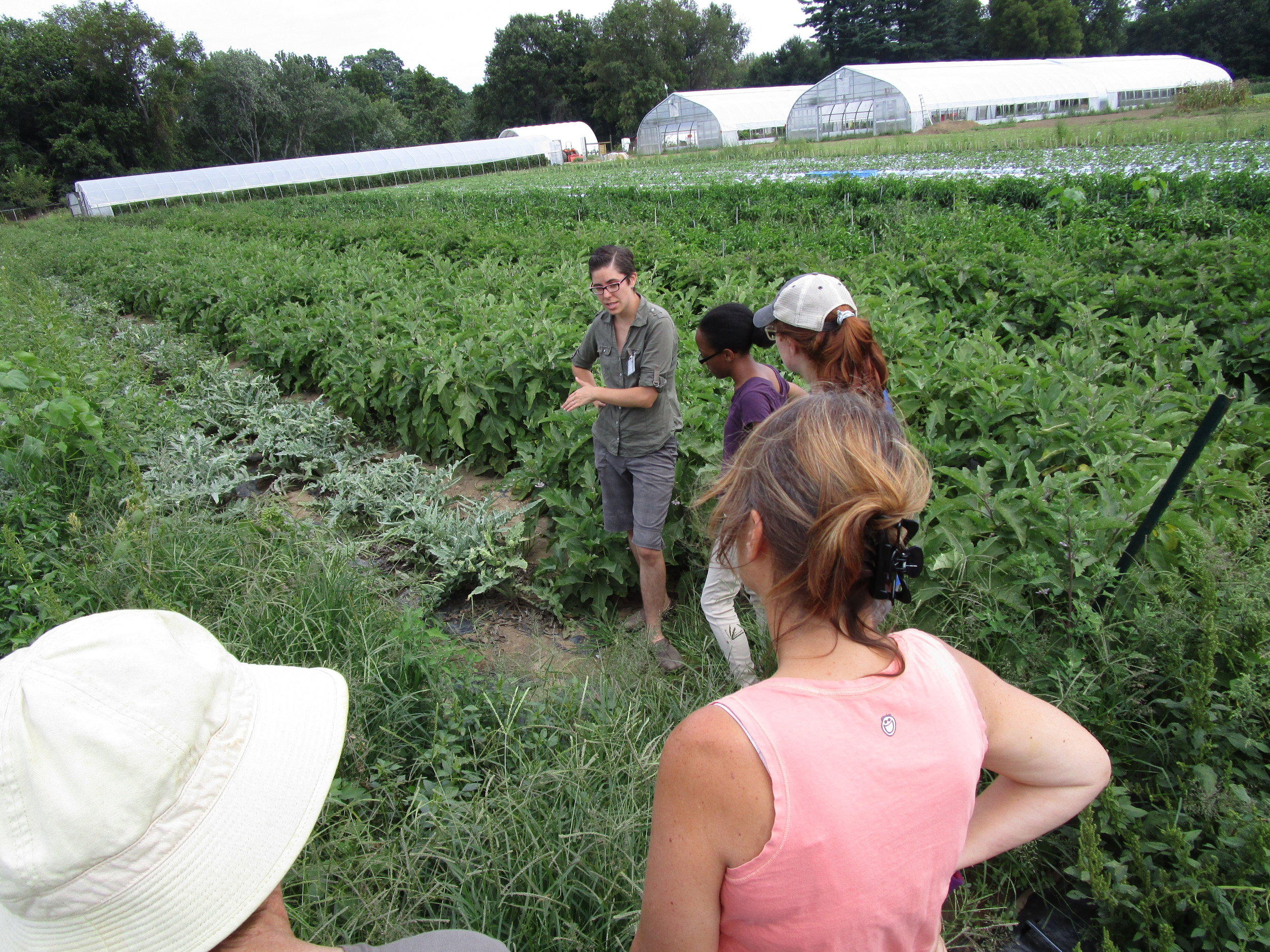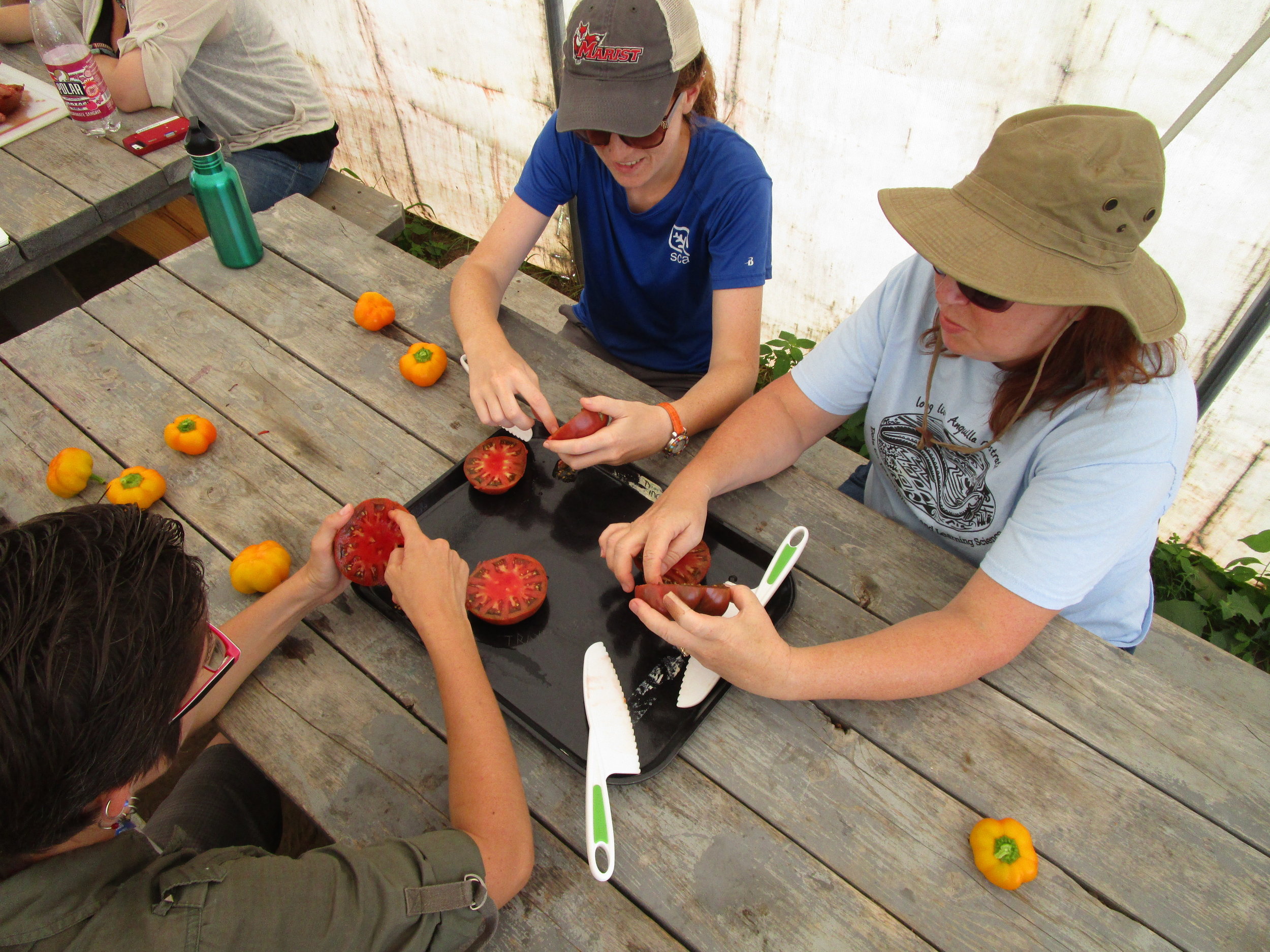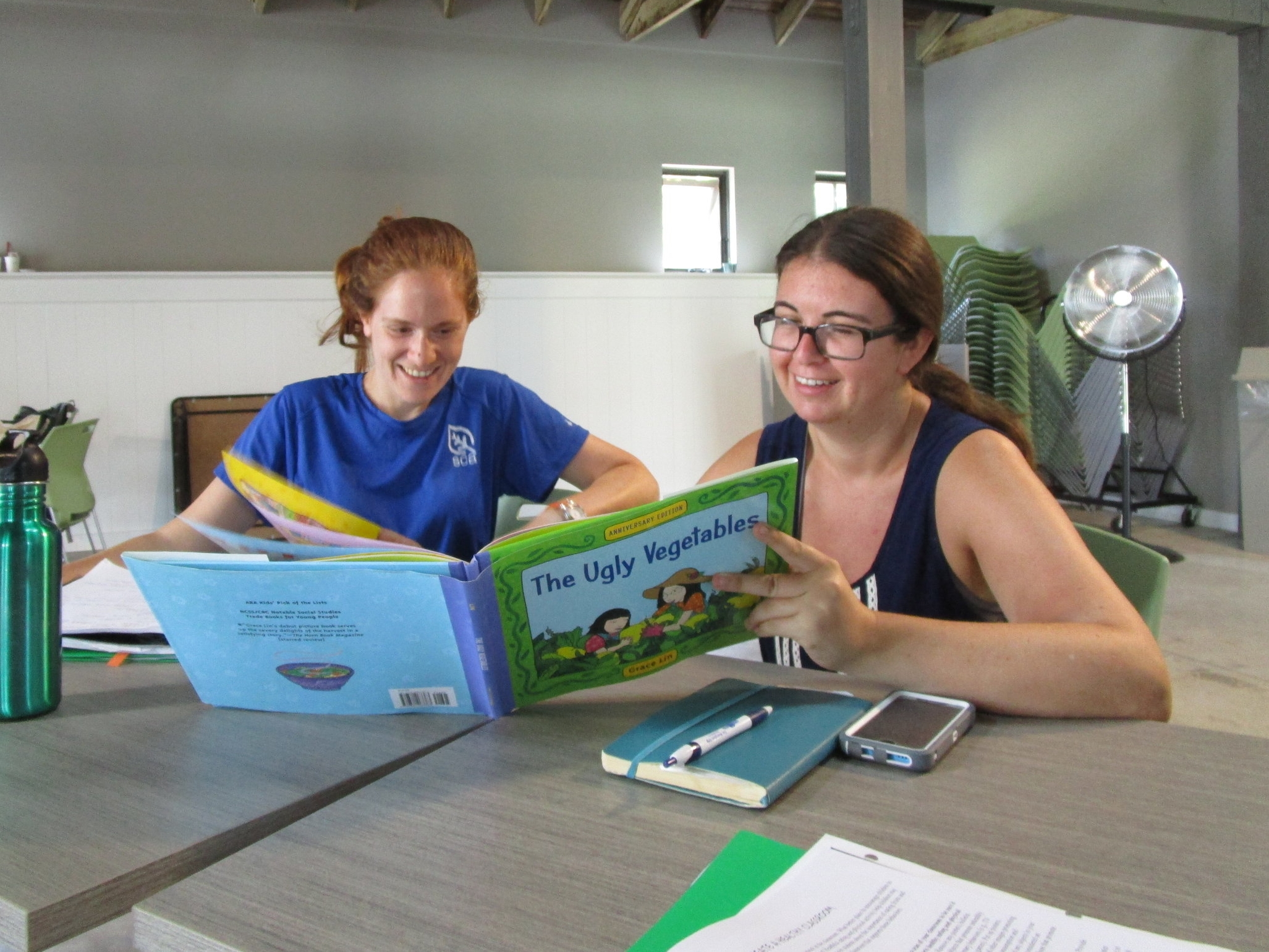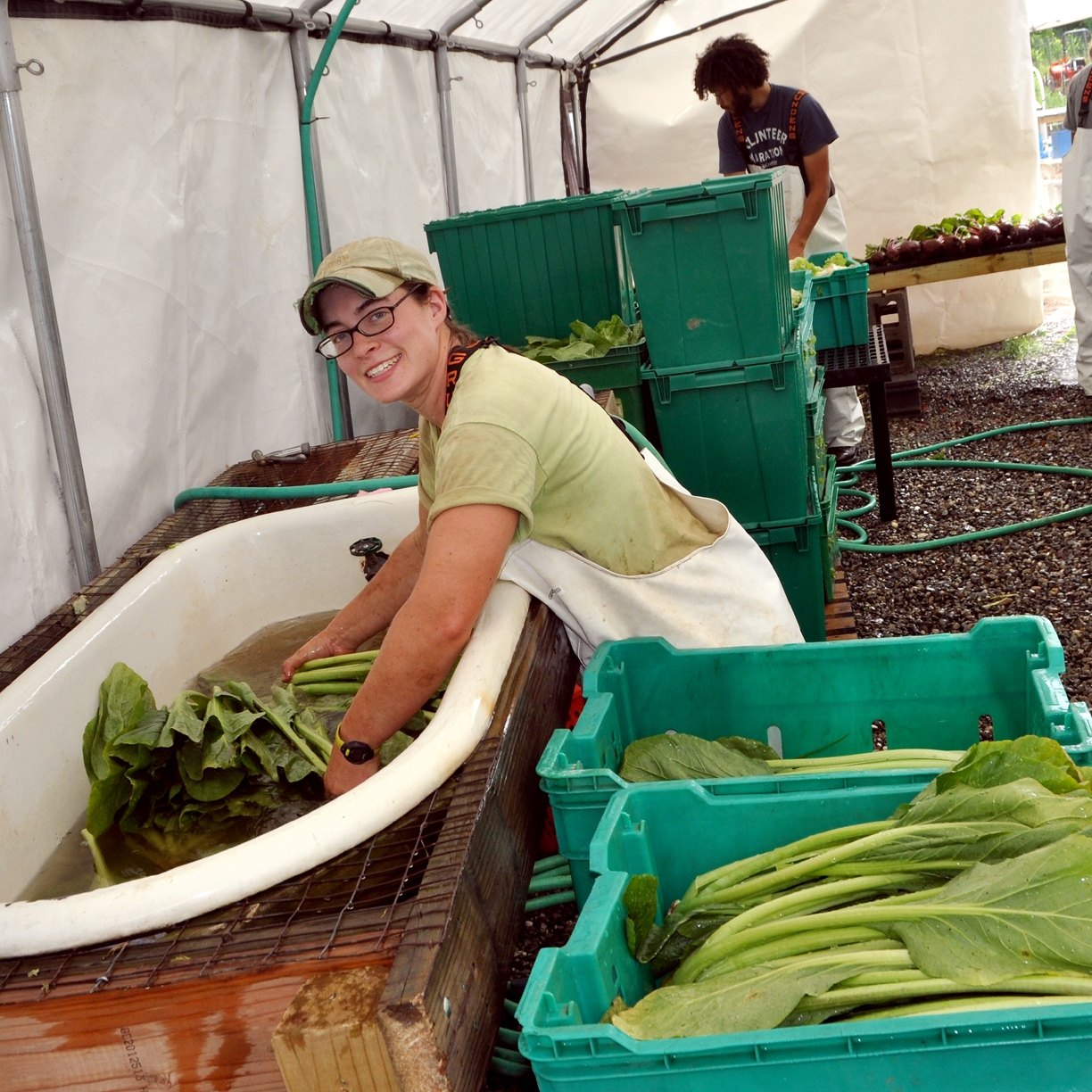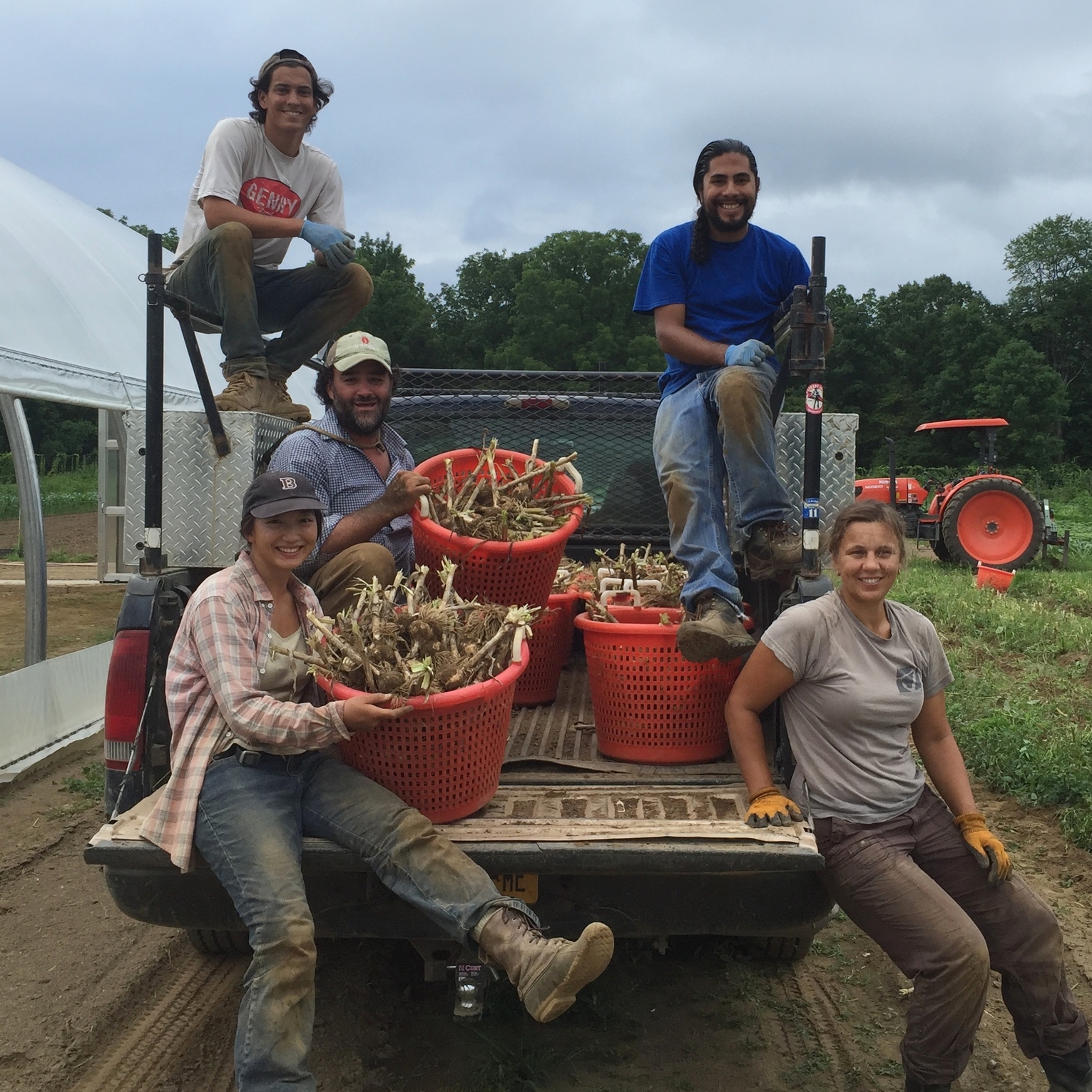Sowing the Seeds of Life-Long Healthy Eating
by Ellie Limpert
The minute a class of students step off of their school bus on to the farm, the excitement is palpable. The day may be grey, rainy, or even snowing, but the young pack of explorers can barely contain themselves because they know the next two hours hold adventure and discovery. Poughkeepsie Farm Project is a place that invites curiosity and unearths rich multisensory experiences. A place to marvel at the rising steam of a colorful compost mountain, celebrate beneficial insects and dance the honey-bee-waggle, a place where getting dirty is encouraged, and above all, vegetables are king.
As a passionate nutritionist dedicated to inspiring children to develop a taste for vegetables, I find myself in a very powerful position at PFP. It is rare that after digging up an octopus-like carrot, journeying through a kale forest, or discovering the zombie like effects of shredding a beet, children haven’t fallen in love with what our farmers grow. When children line up to leave the farm at the end of their visit we are often confronted with the same questions. From the children: “Can we LIVE HERE?” (it’s always assumed we live in the coop) “More More More More?!!” (referring to whatever vegetable we last tasted) and from myself and fellow educators: “Do they carry this enthusiasm home?!”.
For all those young vegetable enthusiasts who beg for more turnips and kale and wish to live in the spirit of the farm, and for our education team questioning the extent of their reach, we have developed a new and exciting program that works to bridge the gap between PFP and home: Farm Fresh Home Chefs. Farm Fresh Home Chefs is a family cooking workshop series that brings children and their caregivers together for a hands-on healthy-eating experience. During the first hour of these workshops adult participants receive a nutrition lesson while youth engage in a garden activity. Families come together for the last hour to cook together. In this hour together they discover new vegetables or celebrate familiar ones, share money-saving techniques and practice recipe modification, learn appropriate cooking tasks for all ages, and discover the joy of coming together over healthy food.
Fall of 2016 marks our third round of Farm Fresh Home Chefs and we couldn’t be more excited. Below is a story about the experience of a hard-working family of four who participated in Farm Fresh Home Chefs last fall. May PFP continue to sow the seeds of little healthy eaters, and encourage a culture of life long healthy eating in Poughkeepsie.
Sam*, Tina*, Louis* (7th grade), Layla* (5th grade)
Sam and Tina are the epitome of hard working parents dedicated first and foremost to their children’s well-being. Though both would drop anything to ensure the safety and happiness of Louis, 7th grader at Poughkeepsie Middle School, and Layla, 5th grader at Krieger Elementary school, they have found some of their efforts in providing the best for their children to be quite a battle, namely, encouraging healthy food. Participating in “Farm Fresh Home Chefs” (FFHC) a cooking and nutrition program offered by Poughkeepsie Farm Project, was Layla’s request, and Tina and her husband Sam jumped at the chance.
After the first two hour class with FFHC, Tina and Sam could already sense their family’s change in attitude around vegetables. They had just prepared a heart-healthy vegetable-heavy chili as a family that had the kids begging for more. In watching this, Sam exclaimed “Oh we are going to put on so many pounds in this program!” to which Tina responded “Gain weight? We are going to lose weight!” After several classes with FFHC, Sam was its number one advocate. “Our diets have changed dramatically because of this program. The kids aren’t only willing to try new things, but they come home from school eager to help. They even have their own night that they cook now. Fridays." Their one challenge is to make their dish fit Myplate recommendations. "We were not familiar with Myplate before this program and it is such a useful tool.” Eating healthy on a consistent basis takes time and dedication, and when the children join their parents as a team in the kitchen, the results are eye-opening. “I can’t believe such a fun, engaging, educational program that brings our family together is free.” Sam goes on, “It is invaluable. I want to be the first to know of any other program you offer because I will be there. Do you teach how to grow this food too? We want to start a garden.”
*Names have been changed.
Farm Fresh Home Chefs is funded by United Way of Dutchess-Orange Region and The Jeannette F Schlobach Fund of the Community Foundations of the Hudson Valley.





